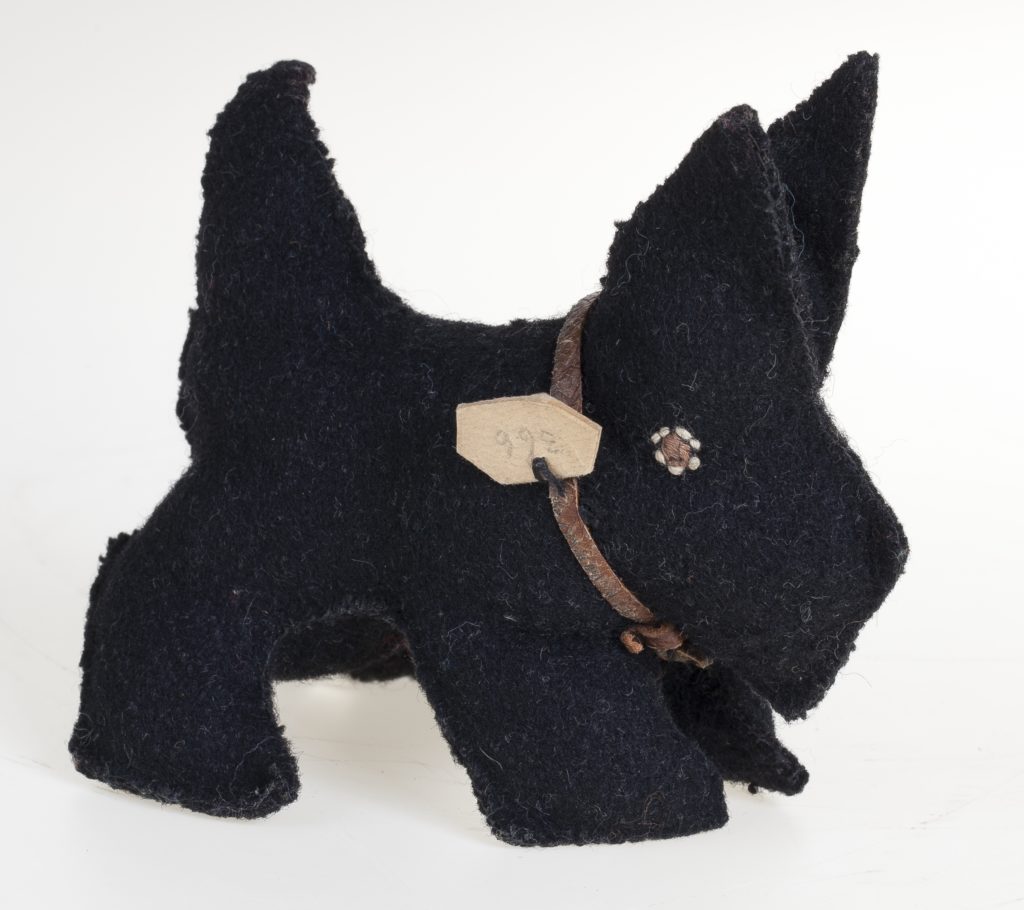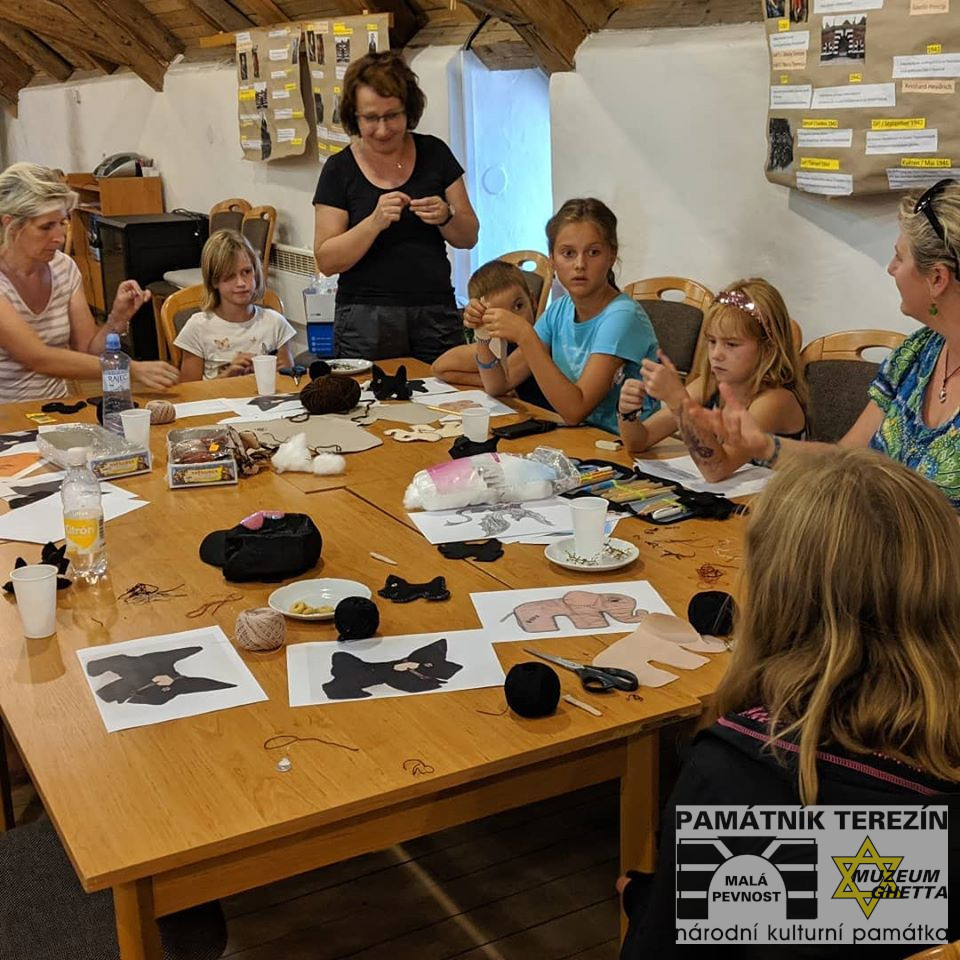Interestingly, the current offer of educational programs the Department of Education for school groups includes a project of research-focused and creative activities highlighting a cloth figurine of a black doggie. In fact, the original figurine of the small dog is kept in the collections of the Jewish Museum in Prague.
As a matter of fact, this particular toy was made in the Terezín Ghetto by its inmate Žofie Fischerová for her daughter Hana. The Fischer family came from Rychnov nad Kněžnou, father Max Fischer was a tradesman, mother Žofie a housewife. The family did profess Jewish religion, observing major Jewish feasts and holidays, but they also decorated a Christmas tree during the Xmas season. After the establishment of the Protectorate of Bohemia and Moravia, the family began to feel the pinch of anti-Jewish measures (among other things, they had to get rid of their pet dog). In spite of the bad times, daughter Hanka also experienced happy moments, such as meeting František Müller, a young man on forced labor assignment near Rychnov, who fell in love with the girl. Hana and František married in the summer of 1941.

In December 1942, both the Fischer and Müller families were ordered to report for transport codenamed Ch from Hradec Králové to the Terezín Ghetto. There, each of them had to perform various kinds of forced labor; for her part, mother Žofie was assigned to a workshop mending army uniforms. Eventually, the fall of 1944 totally disrupted the family ties. First, František was deported from the Ghetto to the Auschwitz-Birkenau concentration camp and Hana´s father followed several days later; he was murdered immediately on arrival. František died in the Dachau concentration camp in early February 1945. Hanka and her mother, who lived to see the liberation of Terezín, returned to Rychnov after the war and gradually resumed their ordinary life.

What is the actual program of this workshop? In its initial part, pupils have at their disposal only a picture of the dog figurine, trying to analyze the object according to given questions (at this moment they have virtually no information about the figurine). Some of the questions asked at this stage are as follows: What material is the figurine made of? What is its state of repair? What could the toy mean for its maker/ recipient? etc. After this analytical phase, participants are given documents (from the Jewish Museum in Prague and the Terezín Memorial), getting acquainted with the fate of the Fischer family and that of František Müller through Hana´s recollections. Proceeding from the information on the life of the family, in the third section, attendees are asked to decide, on the strength of the available knowledge, which member of the family was the most likely author of the dog figurine, which material it was probably made of, and what was its meaning and significance in the life of the Fischer family in their home town.

By learning about the life of the author of this artifact, workshop participants are introduced to the destiny of one specific family adversely affected by the Nazi ideology. The figurine of the small dog is both a witness and a piece of evidence illustrating how the Ghetto inmates, living in the harsh wartime conditions, were trying to retain memories of their life in freedom, and to cope with the degrading conditions they were forced to live in.
After answering all the questions, attending pupils get down to the creative stage of the workshop – to make the figurine themselves, using its model.
This workshop is featured in the educational program following prior agreement with the teachers who lead the relevant group of pupils coming to the Terezín Memorial.
Naděžda Seifertová


